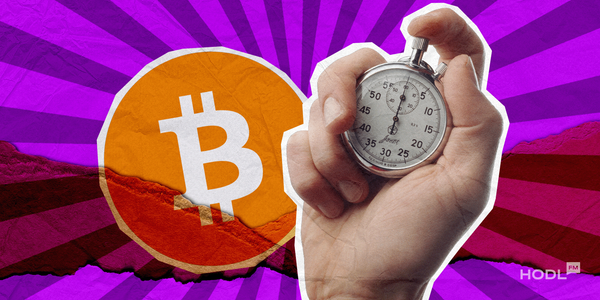Blockchain technology is one of the most influential and beneficial technologies of the decade. The tech started relatively unknown, but today, thanks to some of its branches, such as cryptocurrencies and non-fungible tokens, everyone knows about blockchain, from the teenage kid next door to your grandma living two states away.
But as neat and simple as blockchain technology sounds, a lot of work goes into it. For one, a blockchain has to maintain three almost opposing characteristics: decentralization, scalability, and infrastructure security. It’s harder than it sounds, and many blockchains have a hard time combining all these features into their offerings.
But in this impossible dilemma, or trilemma, if you like, one blockchain seems to have figured it all out: the SUI blockchain. This blockchain claims to be the perfect blend of decentralization, scalability, and infrastructural security. So, how did it master this delicate art? Read along to find out.
What Exactly Is The SUI Blockchain?
If you ask anyone who knows a bit about SUI, they’ll probably tell you that it is a Layer-1 blockchain that provides faster deployment of smart contracts and high transaction speed. That will be a correct definition, but SUI is more than that.
It is also a permissionless Layer-1 blockchain built to adopt a unique object-oriented data model and use a revolutionary purpose-built programming language called “MOVE” to support true digital asset ownership.
But let’s break all of that down a little bit deeper. As a Layer-1 blockchain, SUI serves as the foundational infrastructure for verifying and processing transactions, which is exactly what networks like Ethereum and Bitcoin do.
However, SUI offers instant transaction processing, reduced delays in smart contract deployment, and increased overall speed. That’s on the decentralized end of the trilemma. On the other two ends, the network can achieve reasonable SUI blockchain scalability without compromising on security through a well-worked blend of parallel transaction processing, a delegated proof-of-stake consensus mechanism, and its native programming language, MOVE, which is considered to be “the most powerful smart contract programming language.”
How Does SUI Blockchain Work?
If you’ve read this far, then you know SUI doesn’t work like other blockchains. Unlike other more common and traditional blockchains, SUI works by processing its transactions in a very simple way.
Traditional blockchains work by “vertical scaling,” which involves adding one transaction after the other. It works but gets slower with the number of transactions added. SUI, on the other hand, keeps things simpler.
The SUI blockchain does not rely on all the complex dependencies of transactions stacked on each other. It completes each transaction individually and immediately by locking just the sender’s address instead of the entire blockchain. It doesn’t pass every single transaction through all the computers in the network. SUI only evaluates the relevant part of the data it needs to check.
Here’s a step-by-step explanation of how all of that plays out.
- The sender sends their money to all the validators on the blockchain.
- The validators check if the transaction is valid or not.
- The sender receives the votes from most validators and then sends a certificate back to them.
Use Cases For The SUI Network
Yes, the SUI blockchain is faster than most blockchain networks. That is vital information but what most people care about is a blockchain’s use cases, so here are some of the best SUI Network use cases.
Improved Gaming Experiences
SUI brings many things to blockchain gaming, but perhaps the most impressive one is that it enables more expressive smart contracts. With these new forms of smart contracts, gamers can now own their in-game assets, which creates limitless opportunities for gamers and developers as well.
Lightning Fast Transactions
Transactions are processed almost instantaneously on the SUI blockchain, thanks to its unique and super-powerful approach to processing transactions. Everything is faster with SUI, from peer-to-peer payments to asset transfers.
Decentralized Social Media Interactions
The SUI network Layer-1 blockchain not only supports decentralization for financial transactions; it also decentralizes social media interactions. This means that users will be able to truly own their posts, media, and interactions, and everything will remain verifiable.
Polymedia chat is an excellent example of this. The platform, fully hosted on SUI, eliminates censorship of its on-chain social media posts and conversations, allowing you to chat and be social without having to watch your back.
Improved NFT Experiences
Regarding NFTs, SUI still has fewer NFT projects on the blockchain. However, the quality of the projects it hosts is already impressive, and with time, it will expand and could even become an industry competitor.
What Is MOVE, The Revolutionary Blockchain Language From SUI?
Move Language 🔥 #SUI Blockchain pic.twitter.com/rJBEOhIeaj
— Yasin Ahmed (@yaasiin__ahmed) October 9, 2024
SUI’s Move is the programming the blockchain uses to process its smart contract. It is based on the Rust crypto programming language and used not only by SUI but also by Meta’s Diem and Aptos.
Unlike most blockchains, which track changes in users' accounts through smart contracts, the SUI Move programming language tracks the movement of objects or tokens instead.
The Move Rover mechanism also allows developers to verify that their code executes as it was designed to do. It also allows you to check the validity of any smart contract or blockchain app.
The SUI Team and Roadmap
The SUI project was created by a group of former Meta engineers, including Evan Cheng, Adeniyi Abiodun, Sam Blackshear, George Danezis, and Kostas Chalkias.
This impressive team of engineers founded Mysten Labs to create the SUI blockchain. Since its launch, the project has received over £300 million in Series B funding from many major VC firms, including Andreessen Horowitz and FTX Ventures.
The testnet for SUI was launched in August 2022, while its mainnet went live on the 3rd of May 2023.
As far as the SUI crypto roadmap goes, SUI has another independent organization called The SUI Foundation, which is responsible for searching for large crypto exchanges such as OKX, ByBit, and KuCoin to partner with SUI. These partnerships aim to promote token sales and onboard more users to Web3 via the SUI network.
What Is The SUI Coin?
The SUI coin is the native coin of the SUI blockchain and plays a vital role in the SUI ecosystem.
The SUI coin currently has a maximum supply of 10 billion, out of which only 528 million tokens (5.28%) are circulating in the market.
As for SUI Network tokenomics, the SUI Foundation controls 50% of the token’s supply. The Foundation uses this percentage for programs such as delegation, grants, research and development, and validator subsidies. The remaining 50% is split 10% to Mysten Labs Treasury, 20% to early contributors, 14% for fundraising efforts, and 6% for SUI’s Community Access Program.
What Is A SUI Wallet?
The SUI network comes with SUI wallets specially designed to store, manage, and transact with SUI Network tokens and other compatible digital assets hosted on the SUI Network.
The SUI wallet is available on mobile devices and computers through a browser extension. There are many SUI network wallets available on iOS, Android, and PC devices. Some of them include:
Sui 💧 mainnet is live on Splash - Sui wallet.
— Splash (@splash_sui) May 3, 2023
From now on, Splash users can
- interact with 16+ @SuiNetwork dApps
- stake $SUI token to farm stake rewards
- access the most accurate block data from rpc endpoints provided by @CosmostationVD Sui validator
🧵 https://t.co/DyCjMdojcg pic.twitter.com/FyFhg1id9u
Is There A SUI Network Airdrop?
Many blockchain projects usually launch airdrop programs for their early users after launch, but as of now, there is no SUI airdrop, and the SUI team has stated that there is currently no intention to start one.
The team confirmed this as far back as April 2023. So, until the team releases an official statement of an SUI airdrop launch, you might want to steer clear of any such airdrops as they could be scams.
What Are The Best SUI dApps?
What’s a blockchain without dApps, right? Like any other blockchain network, there are many good decentralized applications on SUI, but which are the best? Here are a few handpicked just for you.
Cetus Protocol
The Cetus is not exclusive to SUI alone. It runs on the Aptos blockchain as well. This impressive dApp is an Automated Market Maker (AMM) and DEX built to offer concentrated liquidity with an efficient mechanism for capital deployment for DeFi users.
The Cetus Protocol is designed with a concentrated liquidity algorithm to optimize trading conditions for traders and liquidity providers.
Cubic
Cubic is one of the best gaming ecosystems on SUI. It includes many games that are all connected through its unified growth system. Cubic is also used for managing and trading Web3 gaming assets.
HeroSwap
HeroSwap is a cross-chain crypto swap platform designed to be instant, private, and anonymous. It offers total protection and ease to users.
HeroSwap can be easily integrated into any cryptographic application of your choice and grants you 50% of the exchange fees. It is compatible with Bitcoin, Solana, DeSo, SDT, USC, and SUI tokens.
Top Games To Play On SUI Network
Regarding blockchain gaming, the SUI gaming ecosystem is host to many exciting games powered by SUI’s unique expressive contracts. Some of the top games to play on SUI are:
- DARKTIMES. Battle Royale
- XOCIETY. Shooter.
- Legend of Arcadia. Casual.
- The Wake. Adventure.
- Panzerdogs. Shooter.
Conclusion
Although SUI is relatively new compared to more established blockchains such as Bitcoin and Ethereum, it is already outperforming many big players with all its new and exciting SUI blockchain features. SUI is not only making transactions easier and faster, but it is also providing earning opportunities for those who invest in SUI tokens.
Disclaimer: All materials on this site are for informational purposes only. None of the material should be interpreted as investment advice. Please note that despite the nature of much of the material created and hosted on this website, HODL FM is not a financial reference resource and the opinions of authors and other contributors are their own and should not be taken as financial advice. If you require advice of this sort, HODL FM strongly recommends contacting a qualified industry professional.



